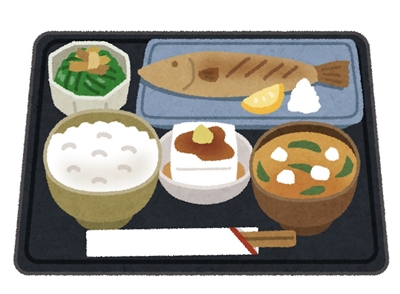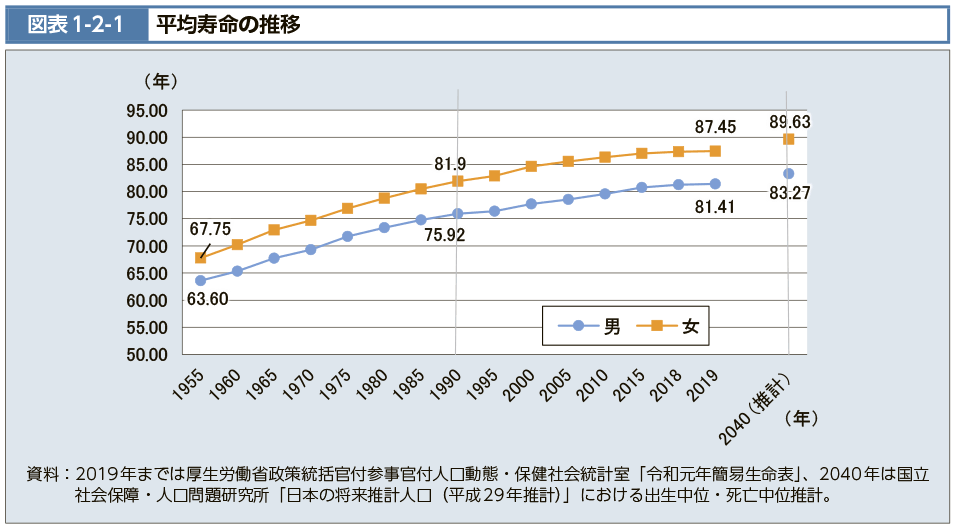Is japanese food healthy?
YES! Japanese food is a healthy food that can be recommended for those who eat a high-calorie, high-lipid diet.
Until about 150 years ago, around the time of the Meiji Restoration, the Japanese diet was based on a coarse diet of one soup and one vegetable on rice, with fish eaten on festive occasions. It seems that the diet was similar to that of vegetarians.
So Japanese food is familiar to vegan diets such as syoujin-ryouri, and healthy. For those who eat a lot of meat and oil, this is a highly recommended healthy food.

In fact, it was the American diet that was healthy for the Japanese in the past. Japanese who ate a typical Japanese diet lacked protein and calories and had a shorter life expectancy, but from around 1955 to the present day, the westernization of the Japanese diet has increased life expectancy.
Source: Ministry of Health, Labour and Welfare Japan
URL:https://www.mhlw.go.jp/stf/wp/hakusyo/kousei/19/backdata/01-01-02-01.html
In 1955, the average life expectancy for a Japanese woman was 67 years, and by 2019, it will be 87 years, a 20-year increase.

McDonald's opened its first store in Japan in 1971, the year I was born. I am grateful to the U.S. for exporting wheat and meat to Japan and introducing American culture to us.
From the perspective of the modern American diet, Japanese food is healthy because it is low in calories and rich in nutrients other than protein (vegetables, vitamins and minerals, etc.).
I think this is a good thing. I think it is healthy to eat both American and Japanese food.
So, Japanese food for Americans. American food is healthy for Japanese.
There is no need to eat only Japanese food just because Japanese food is healthy. Just by including it from time to time, you will be closer to health.
Basics of Japanese Food
Ichijyuu-sansai(One soup, Three side dish)
Japanese food has a basic set of three basic ingredients called "ichijyuu sansai" (One soup, Three side dish). This consists of rice as the staple food, soup, and three side dishes. This is a healthy set that provides a wide variety of nutrients.
Hara-8bunme(80% of food in one's stomach)
There is a saying in English, "Light suppers make long life.
Beginning in 1991, a survival experiment was conducted in the U.S. in which eight researchers lived a subsistence lifestyle in a dome called Biosphere 2.
Due to the low food harvest in the dome, the researchers ate an average of 25% less food than they were supposed to, with a daily energy intake of about 1800 kcal.
As a result, not only did all eight individuals lose weight, but almost all of their blood glucose, cholesterol, blood pressure, and other lifestyle-related parameters decreased across the board.
These and other findings, such as those reported in BioSphere 2, have drawn attention to the fact that a "belly eight" (calorie restriction) not only extends life expectancy, but may also extend healthy life expectancy (the period of time during which a person is healthy and free from disease).
It is also healthy because it contains less gluten and calories, as few dishes use flour or oil.
This post may contain affiliate links. Please read my disclosure policy for details. As an Amazon Associate, Google Adsense,I earn from qualifying purchases.
Japanese Explain Benefits of Japanese FoodArticle List
Japanese Explain Benefits of RiceSimply replacing bread with rice is already healthy.Baking bread requires flour (gluten), butter, and other fats and oils, while rice is just boiled in water and is he...
Miso soup is said to contribute to beauty and health.You may be able to keep your family healthy, long-lived and happy.Is miso soup bad for you?First, you need to know the disadvantages of miso soup. ...
Japanese Explain Benefits of SoybeansJapanese food often uses soybeans. Soybeans provide good benefits to the body. Soy is healthy. For example, tofu, miso, soy sauce, natto, soybean flour, yuba, etc....

